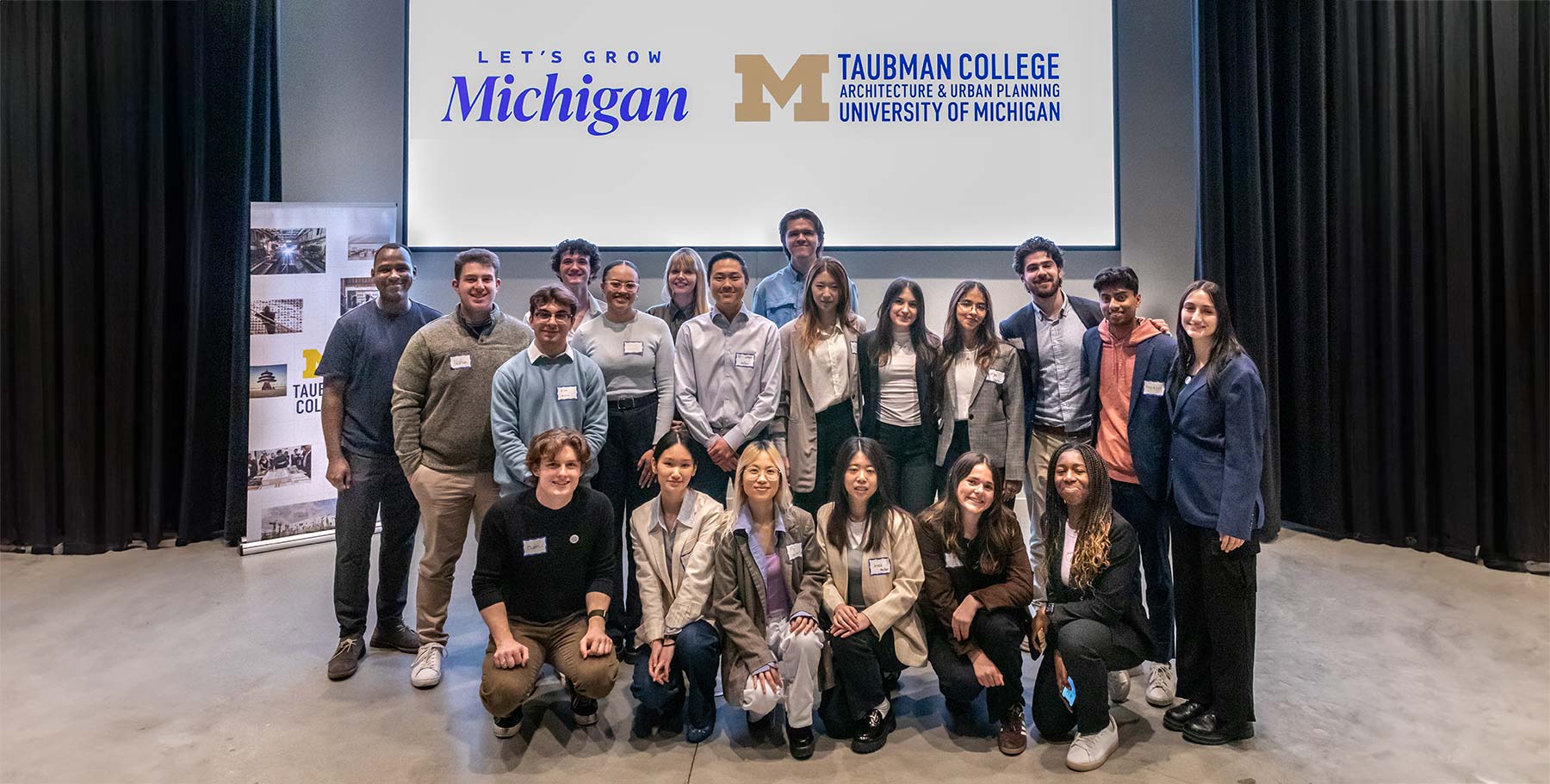Michael McCulloch awarded best student paper from the Society for American City and Regional Planning History
Michael “Mick” McCulloch, author of “Detroit’s Other Industry: Real Estate and the Culture of Elusive Security,” was recognized at the Society for American City and Regional Planning History (SACRPH) conference as winner of the Student Research Prize. The award is given for the “best research paper on planning history” submitted by a student at SACRPH’s biannual conference which took place October 3-5 in Toronto.

The abstract reads as follows:
“Prosperity and real estate activity go hand in hand…the two greatest elements of business life and activity in Detroit today are automobiles and real estate.”
--H.T. Clough, executive secretary, Detroit Real Estate Board, 1915
The modern worker’s home made Detroit’s Fordist industrialization possible. During the years 1914--1929, from Ford’s “Five Dollar Day” to the Great Depression, industrialists, real estate developers and workers produced a building boom in housing that reshaped the urban society, creating a class of stable mass--production employees and invested consumers. The real estate economy, in symbiosis with the city’s industrialization, constructed Detroit’s homeowner--urbanism by financing, building and selling tens of thousands of modest homes to workers.
This paper will explore Detroit’s real estate boom as a cultural project, arguing that individual security was its fundamental ideal even among larger scale “community builders” such as B. E. Taylor. As home builders and sellers gained the authority of professionalism in the Model T Era they posited the worker’s home as a safe place to invest and grow a lifetime’s wealth, and as protection from the uncertainties of illness, job loss, and aging. The advertisements and salesman--training records of Detroit Realtors will be used to illustrate the security discourse, its use to entice worker-- homebuyers and assuage their fears of mortgage debt, and also its crisis--proneness, being a model of security requiring continuous value--appreciation and uninterrupted employment. Such security proved elusive from the beginning as homeowners faced insecurities brought about by speculation, shifting perceptions of home values, and cyclical economic uncertainty, reaching a crisis point with the worldwide depression of 1929. This research will offer reflections on the fragile promise of real--estate--as--security within industrial capitalism by analyzing records of Detroit’s “distressed homeowners” of the 1930’s.
This project suggests a new significance for Detroit’s largely abandoned worker’s houses, often seen as mere “ruins” in the present: they index social contradictions that were built into the structure of the city from the beginning of its automobile--based industrialization. Finally, this paper will suggest historical lessons about the precariousness of working--class homeownership as a social model, badly needed in the wake of the subprime foreclosure epidemic that began in 2008, as workers continue to seek security amid crisis.
About SACRPH: The Society for American City and Regional Planning History is an interdisciplinary organization dedicated to promoting scholarship on the planning of cities and metropolitan regions over time, and to bridging the gap between the scholarly study of cities and the practice of urban planning. The organization’s members come from a range of professions and areas of interest, and include historians, architects, planners, environmentalists, landscape designers, public policy makers, preservationists, community organizers, and students and scholars from across the country and around the world. In addition to sponsoring the biennial National Conference on Planning History, the Society grants prizes and awards for outstanding accomplishments in American planning history, research, teaching, and publication; provides student research awards; produces a semi-annual newsletter; and publishes the quarterly Journal of Planning History.




